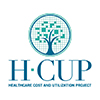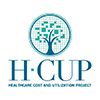National Healthcare Quality and Disparities Report
Latest available findings on quality of and access to health care
Data & Analytics
- Data Infographics
- Data Visualizations
- Data Tools
- Data Innovations
- All-Payer Claims Database
- Consumer Assessment of Healthcare Providers and Systems (CAHPS®) Program
- Healthcare Cost and Utilization Project (HCUP)
- Medical Expenditure Panel Survey (MEPS)
- National Healthcare Quality and Disparities Report Data Tools
- Network of Patient Safety Databases
- AHRQ Quality Indicator Tools for Data Analytics
- Surveys on Patient Safety Culture
- United States Health Information Knowledgebase (USHIK)
- Data Sources Available from AHRQ
Data Resources
Filter by Topic
- Access to Care (4)
- Adverse Events (1)
- (-) Ambulatory (2)
- By Payer (2)
- By State (3)
- Children (3)
- Children (1)
- Children/Adolescents (1)
- Clinicians (1)
- Community Pharmacies (1)
- (-) Costs (2)
- Costs & Charges (1)
- Coverage (4)
- Data (3)
- Discharges by State (1)
- Disparities (2)
- Elderly (1)
- Element Definitions, Values & Information Models (1)
- Emergency Departments (4)
- Employer (1)
- Estimates (State & Metro) (1)
- Expenditures & Projections (3)
- Health (5)
- Health Care (8)
- Health Conditions (5)
- Health Plans (3)
- Health Systems (1)
- Hospital Characteristics (2)
- Hospitalizations (10)
- Household Spending (1)
- Injuries Seen (1)
- Inpatient Care (1)
- Insurance (9)
- Medicaid (1)
- Medicare (1)
- Men (1)
- Mental Health (3)
- Mental Health and Substance Abuse Disorders (2)
- Obesity (1)
- Opioids (1)
- Patient Experience (1)
- Payment Sources (1)
- Premiums (1)
- Prescription Drugs (1)
- Preventable (1)
- Private (1)
- Quality (3)
- Readmissions (2)
- Safety Culture (1)
- SCHIP (1)
- Spending (2)
- State (1)
- Surgery (3)
- Systematic Review (1)
- Systems - Characteristics (1)
- Uninsured (2)
- Use (3)
- Visits (2)
- Women (2)
Data Resources
The Agency for Healthcare Research and Quality (AHRQ) offers practical, research-based tools and other resources to help a variety of health care organizations, providers and others make care safer in all health care settings.
Results
1-4 of 4 Resources displayed
HCUPnet is a free, on-line query system based on data from HCUP. The system provides health care statistics and information for hospital inpatient, emergency department, and ambulatory settings, as well as population-based health care data on counties.

The MEPS Medical Provider Component (MPC) collects data from a sample of providers (physicians, hospitals, home health agencies, and pharmacies) who provided medical care to MEPS Household Component respondents. The MPC collects data on dates of visits/services, use of medical care services, charges and sources of payments and amounts, and diagnoses and procedure codes for medical visits/encounters.

Health care costs (both charges and payments) are collected for all persons for each medical event they experience in the year, including the amount from each payment source. Charges are the dollar amounts asked ("charge") for a service by a health care provider. This is often different from the actual payments made to providers. Expenditure estimates are based on payments, not charges. More specifically, expenditures in MEPS are comprised of direct payments for care provided during the year, including out-of-pocket payments and payments by private insurance, Medicaid, Medicare, and other sources. In addition to the tables, query tool, and publications below, person-level and event-level data files with health care expenditure variables can be downloaded for analysis.

The State Ambulatory Surgery and Services Databases (SASD) are part of the family of databases and software tools developed for the Healthcare Cost and Utilization Project (HCUP). The SASD include encounter-level data for ambulatory surgeries and may also include various types of outpatient services such as observation stays, lithotripsy, radiation therapy, imaging, chemotherapy, and labor and delivery. The specific types of ambulatory surgery and outpatient services included in each SASD vary by State and data year. All SASD include data from hospital-owned ambulatory surgery facilities. In addition, some States include data from nonhospital-owned facilities.



